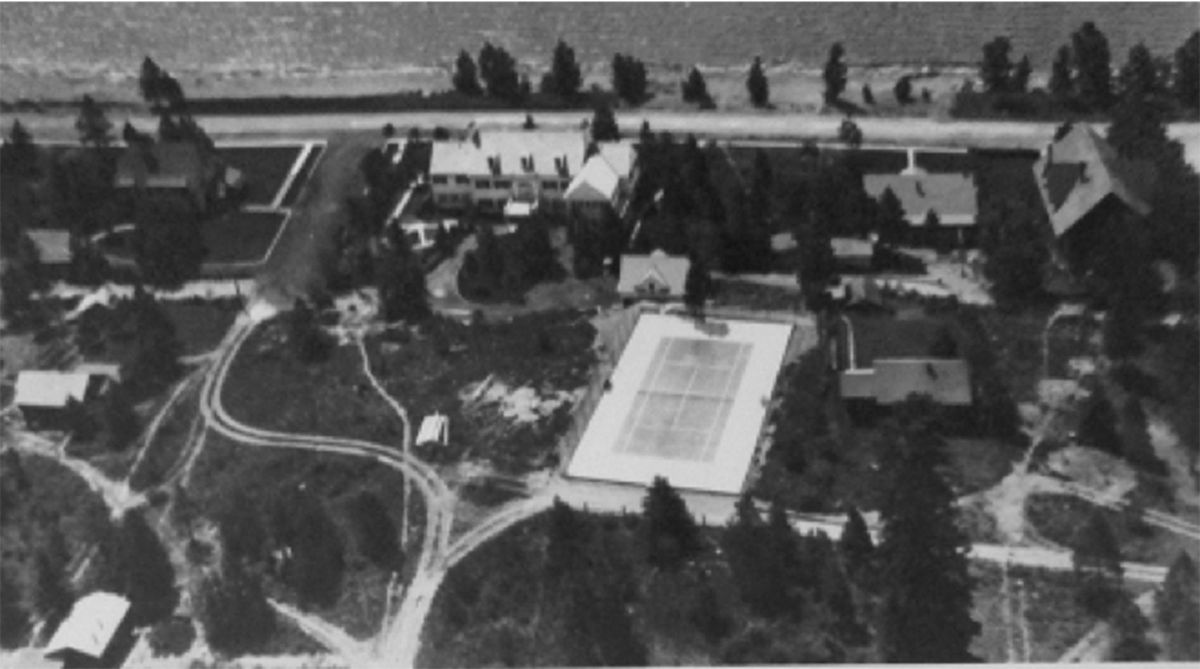Sanders Beach mansion holds idyllic memories for Stanly Easton’s grandson

When Tom Black spent his childhood summers at a Lake Coeur d’Alene mansion during the 1940s and 1950s, dressing up for dinner was a must.
“I wore short pants and a formal collar,” said Black, the grandson of former Bunker Hill Mining Co. Chairman Stanly Easton and his wife, Estelle. “The Eastons were a formal family. The men wore suits and ties, and the women wore cocktail dresses for dinner. It was served by two maids.”
The Eastons’ 14,000-square-foot house in Coeur d’Alene’s Sanders Beach neighborhood was featured in a Feb. 18 Spokesman-Review story. The article looked at the upper-class lifestyle of the home’s first occupants.
Black, a 74-year-old Boston resident, remembers idyllic summer days at the house, which is currently on the market for about $8 million. But he said some of the stories about the property at 1321 E. Lakeshore Drive actually date to later owners.
Black said the “Gentlemen’s Club” on the third floor, with a bar and dance floor, was a later addition. When his grandparents lived there, the upper level had two bedrooms, a bathroom and attic space.
Stanly Easton, a sportsman, kept a locked gun closet in the basement of the house, Black said. He doesn’t remember the house having a basement “safe room” with a phone line described in the article, but said he and his cousins used two changing rooms on the lower level before they headed out to the lake to play.
“I learned how to swim and sail on Lake Coeur d’Alene,” Black said.
The family navigated the lake in an 18-foot wooden sailboat called a Cape Cod knockabout and a Dart triple-cockpit speedboat.
The Eastons also had their own tennis court, which extended into part of Ash Avenue. In the formal gardens surrounding the house, there was an area called the “marquee,” used by the family for outdoor dining.
Stanly Easton worked for Bunker Hill Mining for 55 years, earning national recognition in the mining industry. The Colonial Revival house at Sanders Beach was the Easton family home from 1923 to 1958.
Black’s mother, Anne, was the youngest of the three Easton daughters. She met her husband, Evertt A. Black, at a dude ranch in Montana. Although the couple settled in the Boston area, they returned to Coeur d’Alene to spend summers with her parents.
In the 1940s, the trip required three days of train travel. Later, the family took a 14-hour flight to Spokane. “It was quite an adventure,” Black said.
Stanly Easton’s grandchildren called him “Bompa.” At 6 feet 4 inches tall, he was an imposing man, but a “shadow of his former self” by the time Black knew him in his 70s and 80s. “As he got older, he had terrible arthritis.”
Contrary to the stereotype of a hard-drinking miner, Black recalls his grandfather – the son of an Episcopal priest – as someone who drank sparingly. “We might have had champagne to celebrate a birthday,” he said.
Black’s grandmother, Estelle, “was a wonderful person, firm and strict,” he said. “She was the ‘no-running-in-the-house type.’”
When her daughters and their families descended for the summer, Estelle Easton hired a babysitter to keep track of the children. The family also employed a cook, the two maids and a gardener who maintained the extensive landscaping on the property, Black said.
Since he grew up in a suburb of Boston without a downtown, Black and his two siblings enjoyed exploring Coeur d’Alene.
“We thought it was exciting to go to the Rexall Drug Store,” he said. “I remember the Roxy Theatre’s Saturday show. There was a newsreel, a cartoon and a Dick Tracy or Lone Ranger feature before the regular show.”
He also recalled tugboats delivering logs to sawmills on the lake. Sanders Beach was lined with stray logs, which the kids used as rafts. The nearby Rutledge mill had a shift-change whistle “that you could set your watch by,” Black said. “It was fabulous.”
Black last visited his grandparents at the house when he was 14. About 20 years ago, he saw the house’s interior again during a tour when previous owners put it on the market.
After his grandparents sold the house, they moved to California, where Stanly Easton died in 1961.